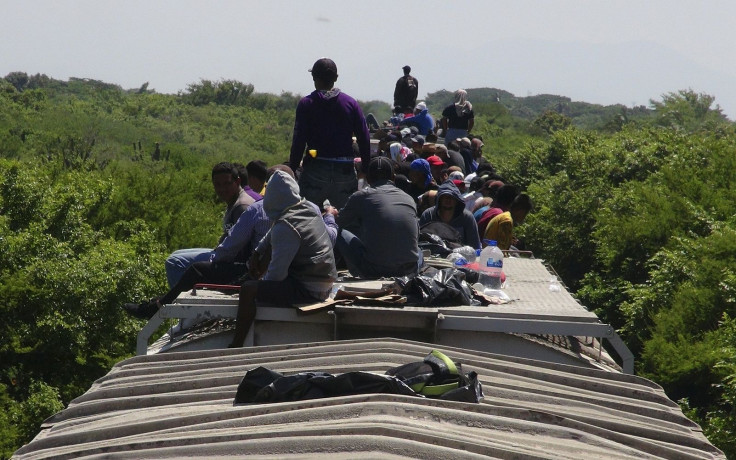Mexico Struggles To Manage Central American Migration

Thousands of protesters gathered across the United States over the weekend to call for tighter border security and the deportation of the more than 50,000 Central American child migrants who have entered the U.S. over the past year. But Central American migrants face the threat of deportation long before they even reach the U.S. border. In 2013, Mexico detained and deported more than 86,000 migrants, 9,893 of them minors, overwhelmingly from the “northern triangle” countries of Honduras, El Salvador, and Guatemala.
The Mexico-Guatemala border region is known for being a porous area, where Central Americans and Mexicans live in mixed communities on both sides of the border. But farther north, Mexican authorities have increasingly cracked down on Central Americans attempting to travel through the country to the U.S. In the first half of 2014, according to Mexican government statistics, the country detained 10,505 minors, already more than the number of minors detained in all of 2013.
“Mexico is okay with having migrants within a few miles of its border, and they’re okay with having migrants who don’t intend to stay,” Adam Isacson, senior associate for regional security policy at the Washington Office on Latin America, said. “But Mexican authorities try to stop people from trying to go more inland by setting up more roadblocks than the U.S. Border Patrol does. And so it’s actually hard to migrate by taking the highways, by taking a bus or driving.”
The exceptions, Isacson notes, are migrants who have money to pay smugglers, or opt for the freight trains -- known as “La Bestia” or "The Beast" -- that ferry migrants hundreds of miles from the southern border state of Chiapas up to the edge of Mexico City. Mexican security forces are largely absent from these train routes, leaving them vulnerable to Central American gangs and bandits who extort or threaten the lives of the migrant passengers. The price to even board “La Bestia” is reportedly as high as $100 per person.
In recent weeks, Mexico’s President Enrique Peña Nieto has pledged to fortify border security even further. He and Guatemalan President Otto Pérez Molina last week announced a new border program that they said would increase the number of checkpoints and protect migrants from criminal groups. Mexican Interior Minister Miguel Ángel Osorio Chong also pledged last week to prevent migrants from risking their lives on the freight trains.
But Peña Nieto’s government also faces criticism from within the country on its approach so far to the flow of Central American migrants traveling through Mexico. An op-ed earlier this month by columnist Martín Espinosa in Mexican newspaper Excelsior placed responsibility for handling the crisis on the Mexican government. “In recent years, our country’s immigration policy has oscillated between inaction and corruption by immigration authorities,” Espinosa wrote.
An editorial in Mexico’s El Universal newspaper echoed the sentiment. “The fact is that the Mexican authorities are not substantially tackling the problem or preventing it,” it said. “Otherwise 24,000 children traveling alone, mostly from Central American countries like El Salvador, Honduras, and Guatemala, wouldn’t now be detained in the United States.”
Isacson, however, said that concerns around the influx of Central American migrants have largely taken a backseat to the violence and crime Mexicans face at the hands of drug cartels. “That security problem always eclipses the security problem that affects Central Americans,” he said.
© Copyright IBTimes 2024. All rights reserved.






















